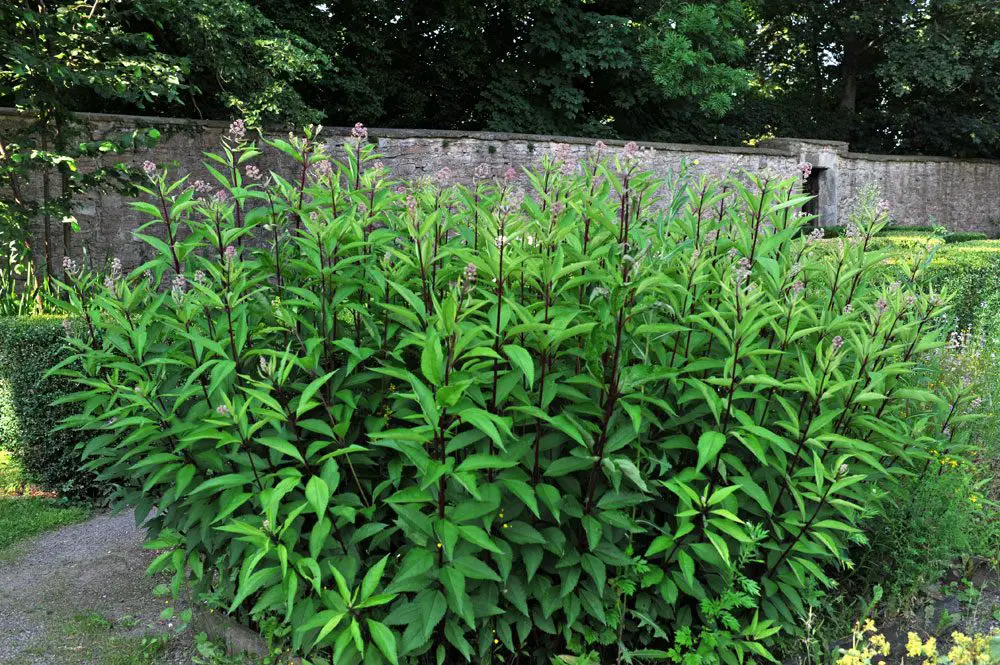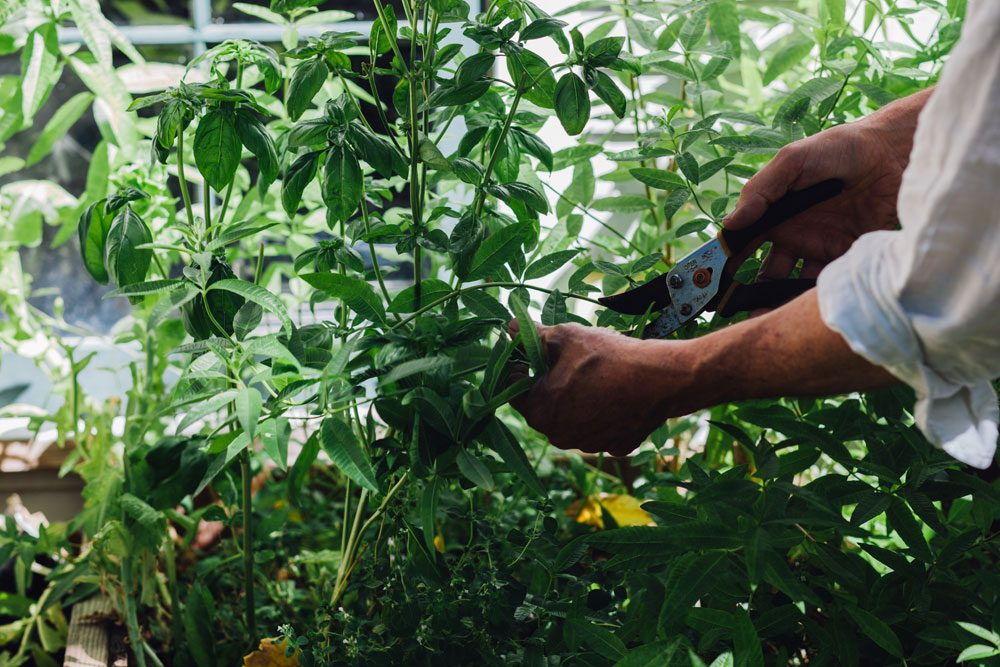
The lemon verbena, also known as lemon bush or verbena, belongs to the verbena family. It initially grew within South America, and Spanish sailors finally brought it to Europe in the 18th century. The lemon-scented plant was and is mainly used as a medicinal and seasoning herb and is primarily made into tea.
With the right care, lemon verbena is partially hardy, but sheds all of its leaves in the cold season. Overall, it can reach a height of up to three meters. However, it often only grows up to one meter high. During the months of July to September, small white flowers develop, which also have a lemon-like scent .
In Latin, the lemon verbena is also known as “Aloysia citrodora”. By the way, a special name for them is “Louisen herb”. Lemon verbena received this name from the wife of the Spanish King Charles the Fourth, who was involved in introducing the plant to Europe.
Popular variety:
| Zitronenverbene ‚Freshman‘ (Aloysia citriodora ‚Freshman‘) | |
|---|---|
| Growth: | erect stems, clumpy, bushy |
| Wuchshöhe: | 90 – 120 cm |
| Wuchsbreite: | 230 – 40 cm |
| Flowering time: | June – August |
| Location: | Sun to partial shade |
| Floor: | permeable, no waterlogging, rich in nutrients |
| » Show more images and data | |
Contents [ show ]
Location and soil
The lemon verbena loves the sun, which is why it is best placed in a warm but protected place. On the balcony it is ideally planted in a bucket. It should also not be too drafty where it is installed.
As for the soil , the perennial prefers it to be well-drained and have a neutral pH . It prefers a slightly alkaline environment and then thrives best. If you plant lemon verbena in a pot , it is best to enrich the substrate with a little expanded clay to increase permeability. A lot of humus benefits the plant.
Water and fertilize lemon verbena
When temperatures are high, it is important to water them regularly. However, the lemon verbena does not like it when it is too wet. Excess irrigation water should always be able to drain away easily.
Every few weeks, the Louisen herb is supplied with a nutrient-rich fertilizer so that even cut shoots can grow back well.
Caring for and overwintering lemon verbena

Regular care is particularly important if the lemon verbena is to grow over several years. The best way to do this is to use the following measures:
- In late summer the shrub is pruned. However, this is not only used to remove old wood and leaves. At the same time it is kept in shape.
- The actual pruning takes place in spring to prepare the plant for the following season. Because then older shoots are removed again, right up to the base of new shoots.
- Occasionally it may make sense to repot the lemon verbena. This should be done approximately every two years.
- In addition to pruning in autumn, the right conditions should be created for overwintering so that it survives the cold season without any problems. If the outside temperature falls below four degrees Celsius, bring lemon verbena into the house and place it in a bright and warm place. Watering is slow during the winter. He will only be allowed outside again in the new year when the general frost has passed.
By the way, it is no problem to dig them up and put them in a pot, provided the shrub has spent the summer outdoors.
Diseases and pests
Lemon verbena is particularly susceptible to spider mites in winter. It is therefore advisable to check the shrub regularly and take action if necessary. In addition to spider mites, you can also often find whiteflies in the branches.
When it comes to diseases, the plant is very robust and not particularly susceptible.
